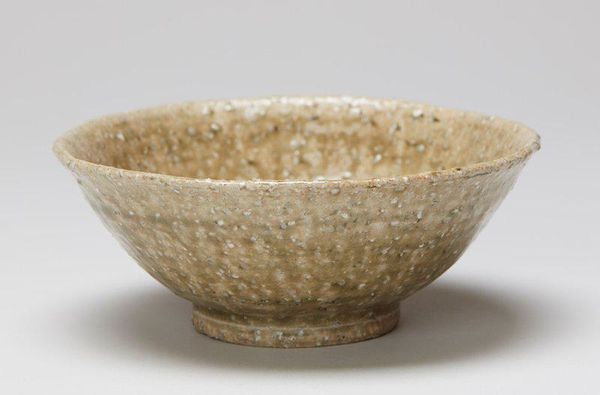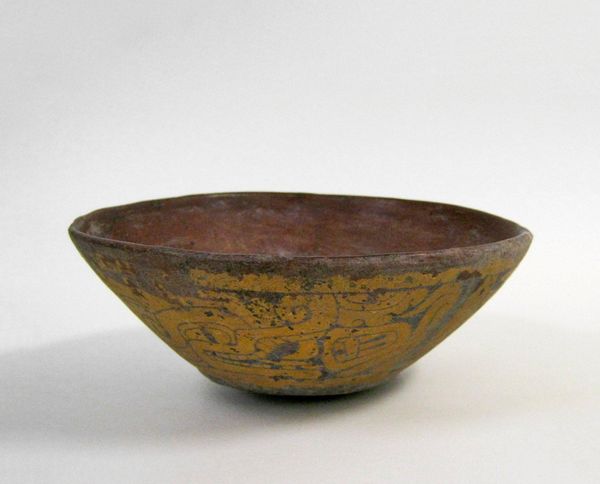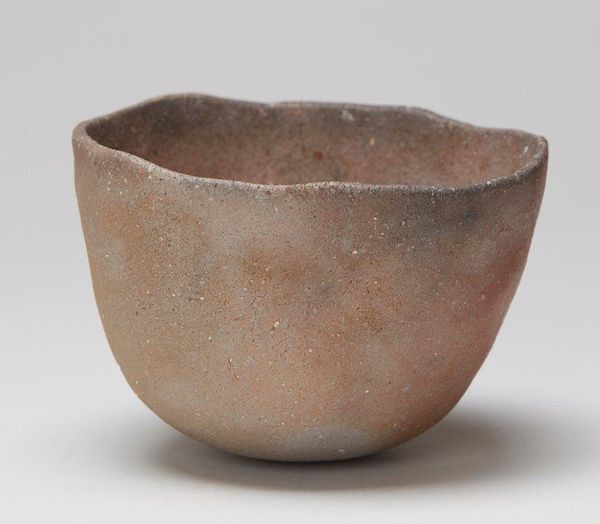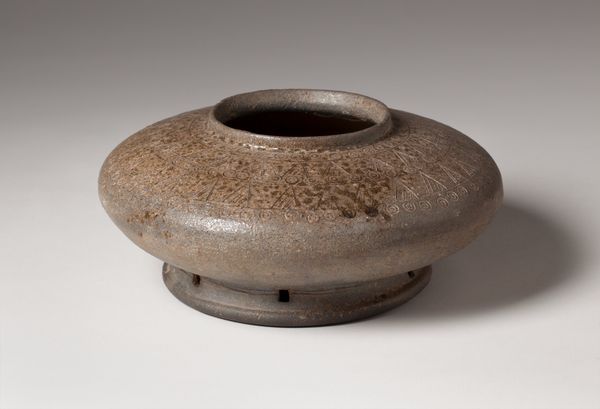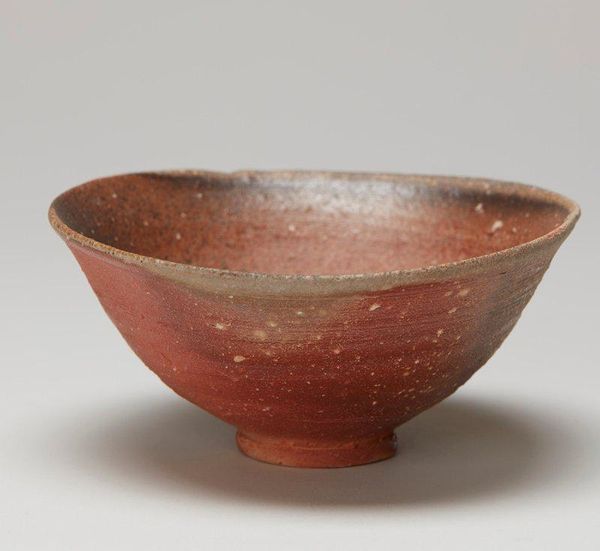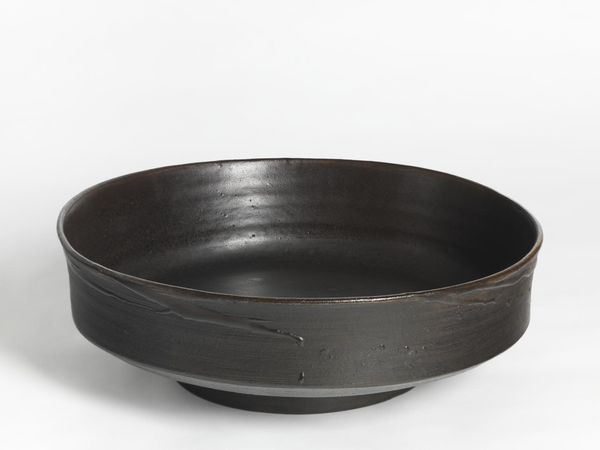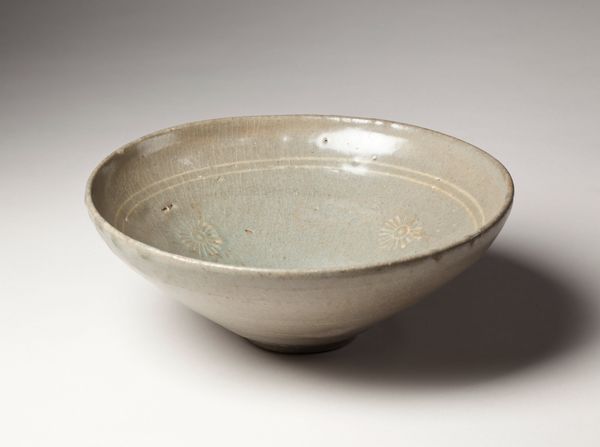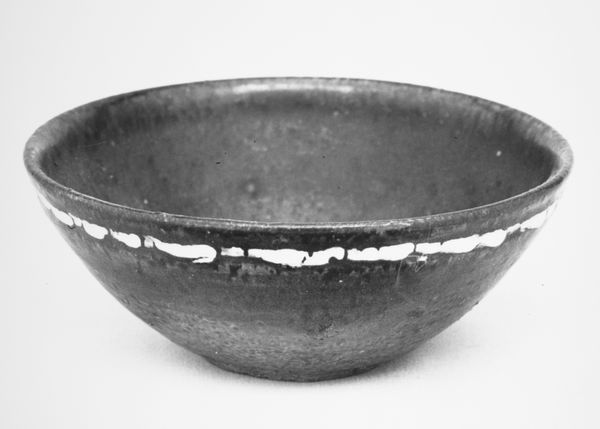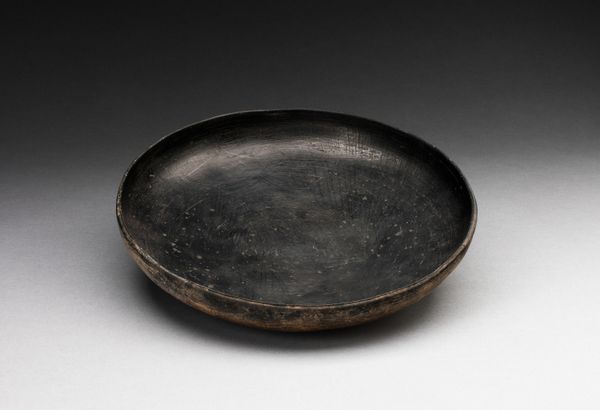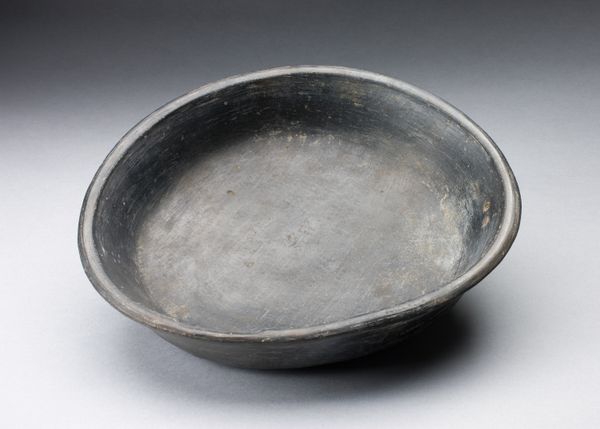
ceramic, earthenware
#
asian-art
#
ceramic
#
japan
#
earthenware
#
stoneware
#
ceramic
Dimensions: 3 x 6 3/4 x 6 3/4 in. (7.62 x 17.15 x 17.15 cm)
Copyright: No Known Copyright
Curator: This is a piece called "(Covered bowl)" by Uematsu Eiji, likely from the 20th century. It resides here at the Minneapolis Institute of Art. Editor: Immediately, I’m struck by the object’s muted tones and what looks to be the dense materiality of the stoneware or earthenware it's crafted from. There’s something about it that speaks to labor. Curator: Definitely. Thinking about the role of Japanese ceramics and craft, especially within the framework of art history, we can examine the ways identity and cultural production intersect. How are notions of Japanese-ness crafted and commodified through such pieces? Editor: And consider the technical process! What kind of firing produced that speckling on the dark surface? The contrasting lighter shade around the lid… I imagine the artist’s touch very viscerally. Also, this forces the question of function versus art object; a bowl with a lid presents a kind of social function, an interaction that I wonder how the artist considered? Curator: Exactly. It invites us to unpack the socio-political context of ceramics within Japanese society during the 20th century. Who was it made for, and what social narratives did such crafted objects reinforce or challenge? Gender obviously plays a part: historically in Japan ceramics was mostly made and appreciated by men. It suggests a world defined by clear social expectations that the piece itself can illuminate for us. Editor: Right, and by acknowledging its potential use as something everyday and grounding – connecting the bowl's production to global debates surrounding the value of craft. Looking closely, one wonders how those specks affect the bowl's utility; could a rough surface imply a more ritualistic or aesthetic than culinary function? How were these ceramics situated within hierarchies of design, class, or the domestic sphere? Curator: Which circles back to the discourse of craft, of course, and challenges ingrained biases about high and low art and about labor distribution across lines of gender and national belonging. In viewing “Covered bowl”, we are urged to interrogate cultural hegemonies past and present. Editor: Absolutely, it’s in this friction between beauty, production, and societal implications where a supposedly "simple" vessel becomes extremely profound. It forces one to think materially and also critically. Curator: For me, it prompts me to continue re-assessing power dynamics as they affect marginalized histories, because objects such as this speak when we listen. Editor: It gives me a strong sense of how the materials dictate form but is then equally influenced by what it’s intended for –a beautiful interplay of artist, method, and daily existence.
Comments
No comments
Be the first to comment and join the conversation on the ultimate creative platform.

